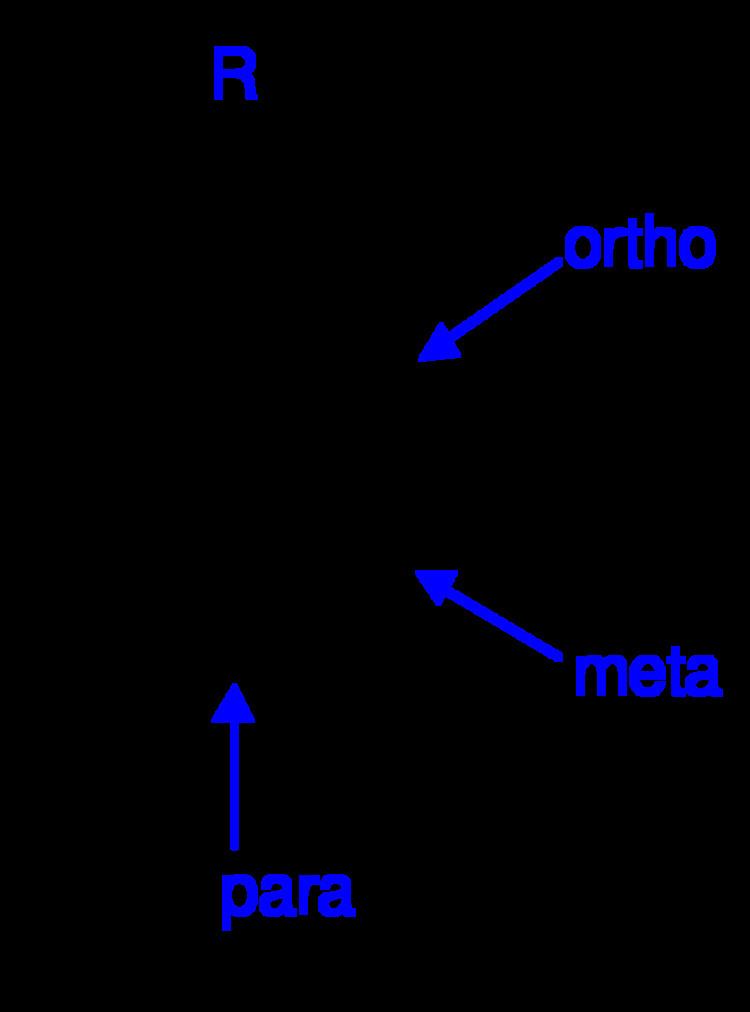 | ||
Arene substitution patterns are part of organic chemistry IUPAC nomenclature and pinpoint the position of substituents other than hydrogen in relation to each other on an aromatic hydrocarbon.
Contents
Ortho, meta, and para substitution
Cine and tele substitution
Origins
The prefixes ortho, meta, and para are all derived from Greek, meaning correct, following, and beside, respectively. The relationship to the current meaning is perhaps not obvious. The ortho description was historically used to designate the original compound, and an isomer was often called the meta compound. For instance, the trivial names orthophosphoric acid and trimetaphosphoric acid have nothing to do with aromatics at all. Likewise, the description para was reserved for just closely related compounds. Thus Berzelius originally called the racemic form of aspartic acid paraaspartic acid (another obsolete term: racemic acid) in 1830. The use of the prefixes ortho, meta and para to distinguish isomers of di-substituted aromatic rings starts with Wilhelm Körner in 1867, although he applied ortho prefix to a 1,4 isomer and the meta prefix to a 1,2-isomer. It was the German chemist Karl Gräbe who, in 1869, first used the prefixes ortho-, meta-, para- to denote specific relative locations of the substituents on a di-substituted aromatic ring (viz, naphthalene). In 1870, the German chemist Viktor Meyer first applied Gräbe's nomenclature to benzene. The current nomenclature was introduced by the Chemical Society in 1879.
Examples
Examples of the use of this nomenclature are given for isomers of cresol, C6H4(OH)(CH3):
There are three arene substitution isomers of dihydroxybenzene (C6H4(OH)2) – the ortho isomer catechol, the meta isomer resorcinol, and the para isomer hydroquinone:
There are three arene substitution isomers of benzenedicarboxylic acid (C6H4(COOH)2) – the ortho isomer phthalic acid, the meta isomer isophthalic acid, and the para isomer terephthalic acid:
